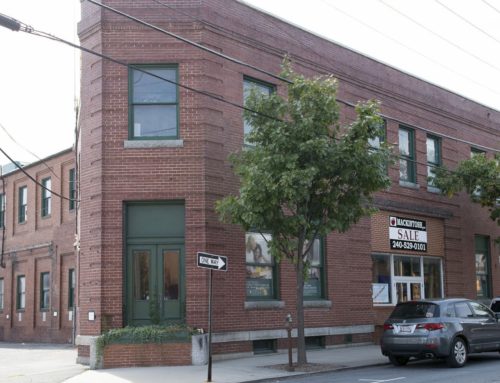Excerpt from the Capital Gazette:
District Court judge ruled Wednesday that mayoral candidate Gavin Buckley and his business partners should have sought a certificate of approval before commissioning a giant mural on the side of their Annapolis restaurant.
Judge John P. McKenna Jr.’s decision means Buckley must seek an after-the-fact certificate of approval if he wishes to keep the mural on the Tsunami building at 51 West St. It’s a victory for the city after it cited the restaurant about a year ago.
Buckley, running as a Democrat in the September primary, went to court rather than filing the certificate of approval because he had concerns the city would try to control the content of the mural and he didn’t think city code gave it authority over murals.
While the judge did deem a small portion of the city’s historic preservation law as unconstitutional, the remainder of it covering the Historic Preservation Commission’s authority over the Historic District was valid. The judge’s decision deemed unconstitutional the phrase “any other factors … which the commission deems to be pertinent” as allowing “open-ended and limitless discretion in determining factors justifying the approval or disapproval of a certificate of approval under the statute.”
But the judge determined that line did not nullify the rest of the city’s law and ordered Buckley and his business, JKB LLC, to file the certificate or find some other form of abatement.
No decision has been made to immediately comply with the court’s decision, to appeal or to remove the mural, Buckley said.
“We are weighing our options,” he said, standing outside of the mural on West Street. “These judges tend to side with the municipalities and not the citizens.”
In the hearings leading up to Wednesday’s decision, Buckley’s attorney Joseph Gormley argued the mural was a First Amendment issue. He also argued city code didn’t specify murals and exempted paint as a regulated exterior change.
The mural is paint arranged into an image and this is a case about government trying to control speech, Gormley said.
City officials have defended its decision to cite JKB LLC, which commissioned the mural, saying a mural is more extensive than paint and is liable for the certificate of approval.
It isn’t about content — it’s about making sure exterior changes don’t alter the historical, cultural, archeological or architectural significance of the property, said Gary Elson, assistant city attorney.
“We look forward to receiving their application,” Elson said.
The case began in June 2015 when artist Jeff Huntington painted a split image of the golden Buddha with an injured nurse from the 1925 Russian movie “Battleship Potemkin.”
McKenna called the parties to Glen Burnie on Wednesday, where he read his opinion from the bench. There were two days of hearings before the decision.
A key part of the judge’s decision involved examining the city’s rules and testing them against established principles that allow the government to establish content-neutral law. These are laws that regulate time, place and manner of free speech, but not the content of that speech.
Governments enforcing content-neutral laws must meet a criteria for those rules to be constitutional. The government must prove a legitimate and significant interest for establishing the law, tailor that law for that interest and not be vague. The judge found the city’s law met these goals.
This means the city has the authority to require certificates of approval for murals and other alterations that could impact the historic, archaeological, architectural or cultural significance of a site or structure within the Historic District.
“These provisions of the Annapolis city code do not target or focus on speech or expressive activity, and the code’s restrictions on First Amendment rights are merely incidental,” McKenna wrote in his decision.



